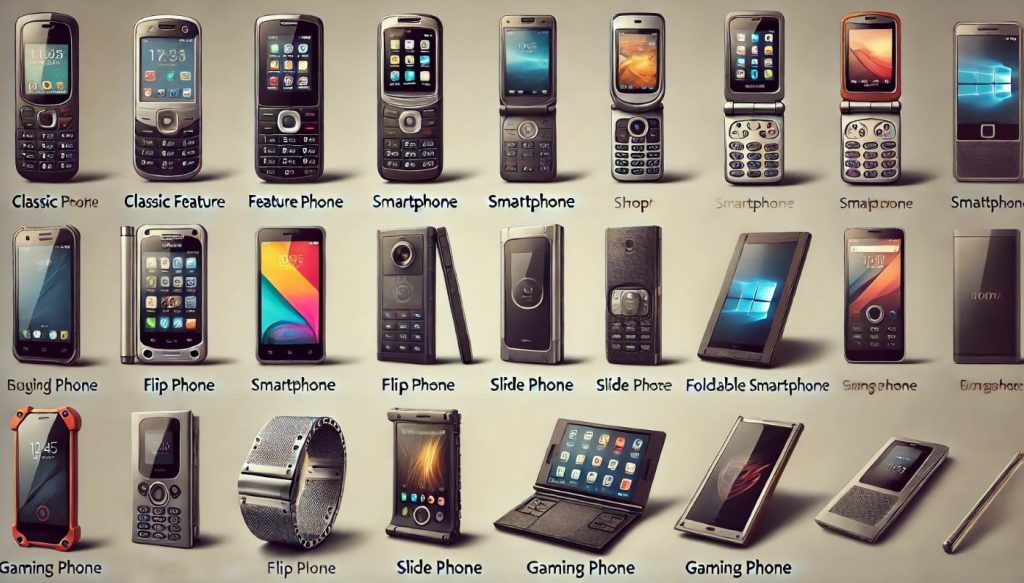Mobile phones have become indispensable in modern life, serving as tools for communication, work, entertainment, and more. The production cost distribution of a mobile phone reveals the complexity behind their manufacturing and pricing.
How Mobile Phones are Produced
1. Raw Materials and Sourcing:
The production of mobile phones begins with sourcing raw materials, such as metals, plastics, and glass. Critical components like cobalt, lithium, and rare earth elements are mined from various parts of the world, particularly in Africa and South America. These materials are then refined and processed to meet the specifications required for manufacturing. Companies often work with multiple suppliers to secure a steady flow of these materials, which are crucial for the production of batteries, circuit boards, and other essential parts of the phone.
2. Design and Development:
Once the raw materials are sourced, the design and development phase begins. Engineers and designers collaborate to create a phone that meets both aesthetic and functional requirements. This process involves extensive research and development, including testing various prototypes. The design phase also considers user interface and experience, ensuring the final product is intuitive and user-friendly. Advanced technologies such as 3D modeling and computer simulations are used to refine the design before moving on to production.
3. Component Manufacturing:
The next step involves manufacturing the individual components that make up the mobile phone. This includes producing microchips, displays, cameras, and batteries. Each component is made in specialized factories, often located in different countries. For instance, microchips might be produced in Taiwan, while displays are manufactured in South Korea. These components are made with high precision, as even minor defects can affect the phone’s performance. Quality control is a critical part of this process, with rigorous testing conducted to ensure each component meets the required standards.
4. Assembly:
After the components are manufactured, they are shipped to assembly plants where the phone is put together. Skilled workers and advanced robotics collaborate to assemble the phones in a highly controlled environment. The assembly process includes integrating the various components, installing the operating system, and conducting final tests. This stage also involves adding any branding or customizations specific to the market or customer requirements. Once assembled, the phones undergo a series of quality assurance tests to ensure they function correctly before being packaged for distribution.
Production Cost Distribution
Here’s an overview of how these costs are generally allocated:
- Components (50-60%)
- Processor (CPU/GPU): One of the most significant costs, accounting for 20-25% of the total production cost.
- Display: High-resolution displays, often accounting for 15-20%.
- Memory (RAM/Storage): Typically represents 10-15% of the cost.
- Battery: Accounts for 5-10% of the total cost.
- Camera Modules: Can take up to 10-15% depending on the number and quality of cameras.
- Other Components: Includes the motherboard, sensors, and other smaller parts, collectively around 10-15%.
- Labor Costs (5-10%)
- This covers the cost of labor for assembling the phone, quality control, and other production-related activities.
- Research and Development (R&D) (10-15%)
- These are the costs associated with designing and developing new models and technologies.
- Marketing and Distribution (10-15%)
- These expenses include marketing campaigns, shipping, and distribution.
- Overhead Costs (5-10%)
- This includes administrative expenses, utilities, and other indirect costs.
9 Types of Mobile Phones

1. Flagship Smartphones
Description
Flagship smartphones are the premium models offered by manufacturers, featuring the latest technology and highest quality components. These phones often have cutting-edge processors, top-tier cameras, high-resolution displays, and advanced features like 5G connectivity and biometric security.
Popular Brands
| Brand | Established | Location |
|---|---|---|
| Apple iPhone | 1976 | Cupertino, CA, USA |
| Samsung Galaxy S | 1938 | Seoul, South Korea |
| Google Pixel | 2016 | Mountain View, CA, USA |
| OnePlus Pro | 2013 | Shenzhen, China |
| Huawei Mate | 1987 | Shenzhen, China |
Averaged Retail Price on Amazon
- Price Range: $800 – $1,500
Popularity
Flagship smartphones are immensely popular among tech enthusiasts and professionals who seek the best performance and features. These phones often set the standard for innovation in the industry.
Production Details
- White Label Production Cost in China: $300 – $600 per unit
- Product Weight: 180-230 grams
- Minimum Order Quantity (MOQ): 1,000 units
- Major Materials: Aluminum or stainless steel frame, glass front and back, AMOLED or OLED displays, high-capacity lithium-ion batteries
2. Mid-Range Smartphones
Description
Mid-range smartphones offer a balance between performance and cost. They incorporate many of the features found in flagship models but at a more affordable price. These phones typically have good cameras, decent processors, and quality displays without the high-end premium finishes.
Popular Brands
| Brand | Established | Location |
|---|---|---|
| Samsung Galaxy A | 1938 | Seoul, South Korea |
| Google Pixel A | 2016 | Mountain View, CA, USA |
| OnePlus Nord | 2013 | Shenzhen, China |
| Xiaomi Redmi | 2010 | Beijing, China |
| Motorola Moto G | 1928 | Chicago, IL, USA |
Averaged Retail Price on Amazon
- Price Range: $300 – $600
Popularity
Mid-range smartphones are popular among a broad audience, including budget-conscious consumers who still want a feature-rich device. They strike a good balance between quality and affordability, making them a popular choice globally.
Production Details
- White Label Production Cost in China: $150 – $300 per unit
- Product Weight: 160-200 grams
- Minimum Order Quantity (MOQ): 2,000 units
- Major Materials: Polycarbonate or metal frame, LCD or OLED displays, lithium-ion batteries
3. Budget Smartphones
Description
Budget smartphones are designed to be affordable while still providing essential features for everyday use. These phones typically have lower-end processors, modest camera systems, and basic displays, but they are sufficient for basic tasks like calling, texting, browsing the web, and using social media.
Popular Brands
| Brand | Established | Location |
|---|---|---|
| Xiaomi Redmi | 2010 | Beijing, China |
| Motorola Moto E | 1928 | Chicago, IL, USA |
| Nokia C Series | 1865 | Espoo, Finland |
| Realme C Series | 2018 | Shenzhen, China |
| Samsung Galaxy M | 1938 | Seoul, South Korea |
Averaged Retail Price on Amazon
- Price Range: $100 – $300
Popularity
Budget smartphones are highly popular in emerging markets and among consumers who need an affordable, reliable device for basic tasks. They are often the entry point for many users into the smartphone ecosystem.
Production Details
- White Label Production Cost in China: $50 – $150 per unit
- Product Weight: 150-180 grams
- Minimum Order Quantity (MOQ): 5,000 units
- Major Materials: Plastic frame, LCD displays, lithium-ion batteries
4. Gaming Smartphones
Description
Gaming smartphones are designed specifically for mobile gaming. They feature high-refresh-rate displays, powerful processors, enhanced cooling systems, and long battery life. Many gaming phones also come with customizable RGB lighting and additional gaming accessories.
Popular Brands
| Brand | Established | Location |
|---|---|---|
| ASUS ROG Phone | 1989 | Taipei, Taiwan |
| Black Shark | 2018 | Beijing, China |
| Nubia Red Magic | 2015 | Shenzhen, China |
| Lenovo Legion | 1984 | Beijing, China |
| Razer Phone | 2005 | San Francisco, CA, USA |
Averaged Retail Price on Amazon
- Price Range: $600 – $1,200
Popularity
Gaming smartphones are popular among avid gamers who demand high performance and a seamless gaming experience. They are also gaining traction among tech enthusiasts who appreciate the powerful specifications.
Production Details
- White Label Production Cost in China: $250 – $500 per unit
- Product Weight: 200-250 grams
- Minimum Order Quantity (MOQ): 1,000 units
- Major Materials: Metal and glass body, AMOLED or OLED displays, advanced cooling systems, high-capacity lithium-polymer batteries
5. Rugged Smartphones
Description
Rugged smartphones are built to withstand harsh conditions. They are designed for durability, featuring reinforced frames, water and dust resistance, and long-lasting batteries. These phones are often used in industrial settings, outdoor activities, and by individuals who need a durable device.
Popular Brands
| Brand | Established | Location |
|---|---|---|
| CAT Phones | 1925 | Deerfield, IL, USA |
| Ulefone Armor | 2010 | Shenzhen, China |
| Doogee S Series | 2013 | Shenzhen, China |
| Blackview BV | 2013 | Hong Kong, China |
| Kyocera DuraForce | 1959 | Kyoto, Japan |
Averaged Retail Price on Amazon
- Price Range: $300 – $700
Popularity
Rugged smartphones are popular among outdoor enthusiasts, construction workers, and anyone who needs a robust and reliable phone that can endure extreme environments.
Production Details
- White Label Production Cost in China: $150 – $300 per unit
- Product Weight: 250-300 grams
- Minimum Order Quantity (MOQ): 2,000 units
- Major Materials: Reinforced plastic or metal frame, Gorilla Glass, rubberized exterior, lithium-ion batteries
6. Camera-Centric Smartphones
Description
Camera-centric smartphones prioritize camera performance. These phones feature advanced camera systems with multiple lenses, high megapixel counts, optical zoom capabilities, and enhanced software for photography and videography. They are designed for photography enthusiasts and content creators.
Popular Brands
| Brand | Established | Location |
|---|---|---|
| Apple iPhone Pro | 1976 | Cupertino, CA, USA |
| Google Pixel Pro | 2016 | Mountain View, CA, USA |
| Huawei P Series | 1987 | Shenzhen, China |
| Samsung Galaxy S Ultra | 1938 | Seoul, South Korea |
| Sony Xperia 1 | 1946 | Tokyo, Japan |
Averaged Retail Price on Amazon
- Price Range: $800 – $1,500
Popularity
Camera-centric smartphones are extremely popular among photography enthusiasts, social media influencers, and professionals who rely on high-quality mobile photography and videography.
Production Details
- White Label Production Cost in China: $300 – $600 per unit
- Product Weight: 180-230 grams
- Minimum Order Quantity (MOQ): 1,000 units
- Major Materials: Metal and glass body, high-quality camera modules, AMOLED or OLED displays, lithium-ion batteries
7. Foldable Smartphones
Description
Foldable smartphones feature flexible displays that allow them to fold, providing a larger screen in a more compact form factor. These phones represent the cutting edge of mobile technology, offering a unique combination of a tablet and smartphone experience.
Popular Brands
| Brand | Established | Location |
|---|---|---|
| Samsung Galaxy Z Fold | 1938 | Seoul, South Korea |
| Huawei Mate X | 1987 | Shenzhen, China |
| Motorola Razr | 1928 | Chicago, IL, USA |
| Xiaomi Mi Mix Fold | 2010 | Beijing, China |
| Royole FlexPai | 2012 | Fremont, CA, USA |
Averaged Retail Price on Amazon
- Price Range: $1,500 – $2,500
Popularity
Foldable smartphones are gaining popularity among tech enthusiasts and early adopters who appreciate innovation and cutting-edge design. They are also attractive to professionals who benefit from the larger screen real estate.
Production Details
- White Label Production Cost in China: $700 – $1,200 per unit
- Product Weight: 250-300 grams
- Minimum Order Quantity (MOQ): 1,000 units
- Major Materials: Flexible AMOLED displays, metal and glass body, high-capacity lithium-polymer batteries
8. Compact Smartphones
Description
Compact smartphones are designed for users who prefer smaller, more manageable devices. Despite their smaller size, these phones still offer robust performance and essential features. They are ideal for users with smaller hands or those who prioritize portability.
Popular Brands
| Brand | Established | Location |
|---|---|---|
| Apple iPhone SE | 1976 | Cupertino, CA, USA |
| Google Pixel 4a | 2016 | Mountain View, CA, USA |
| Sony Xperia Compact | 1946 | Tokyo, Japan |
| Samsung Galaxy S10e | 1938 | Seoul, South Korea |
| ASUS Zenfone Mini | 1989 | Taipei, Taiwan |
Averaged Retail Price on Amazon
- Price Range: $400 – $700
Popularity
Compact smartphones are popular among users who prefer a smaller form factor without sacrificing performance. They appeal to individuals who need a highly portable device that fits easily into pockets and bags.
Production Details
- White Label Production Cost in China: $150 – $300 per unit
- Product Weight: 130-160 grams
- Minimum Order Quantity (MOQ): 2,000 units
- Major Materials: Metal or plastic frame, LCD or OLED displays, lithium-ion batteries
9. Enterprise Smartphones
Description
Enterprise smartphones are designed for business use, featuring enhanced security, productivity tools, and robust build quality. They often come with software suites tailored for business operations, secure communication, and device management capabilities.
Popular Brands
| Brand | Established | Location |
|---|---|---|
| BlackBerry Key2 | 1984 | Waterloo, Ontario, Canada |
| Samsung Galaxy Note | 1938 | Seoul, South Korea |
| Apple iPhone Pro | 1976 | Cupertino, CA, USA |
| Microsoft Surface Duo | 1975 | Redmond, WA, USA |
| Nokia 8 Sirocco | 1865 | Espoo, Finland |
Averaged Retail Price on Amazon
- Price Range: $600 – $1,200
Popularity
Enterprise smartphones are popular among business professionals and organizations that require secure, reliable devices for their workforce. They are favored for their productivity features, enhanced security, and integration with business systems.
Production Details
- White Label Production Cost in China: $250 – $500 per unit
- Product Weight: 180-220 grams
- Minimum Order Quantity (MOQ): 1,000 units
- Major Materials: Metal and glass body, high-security components, AMOLED or OLED displays, high-capacity lithium-ion batteries








